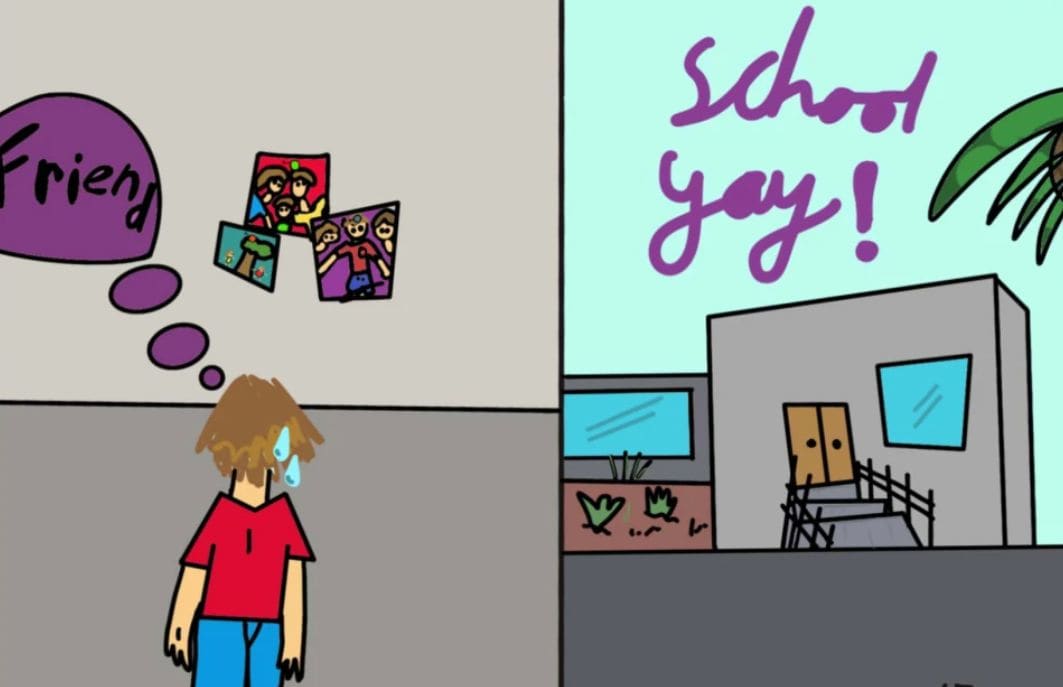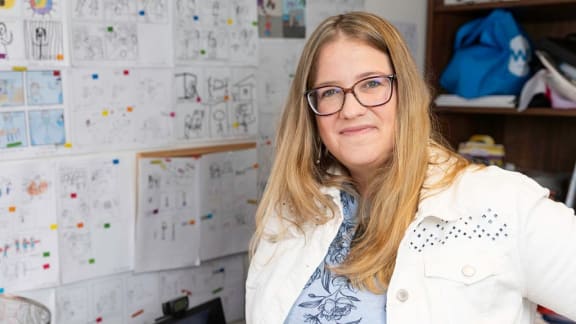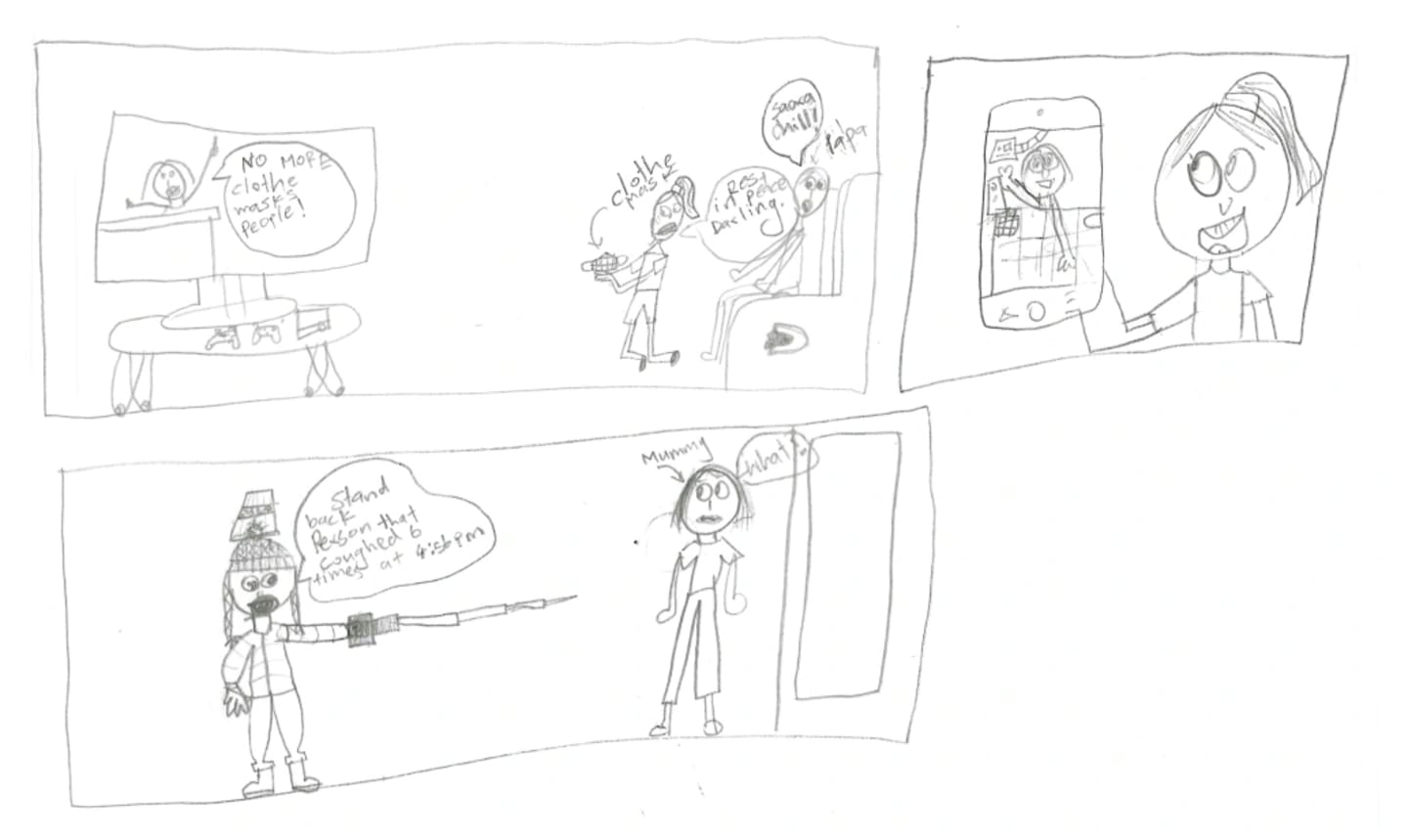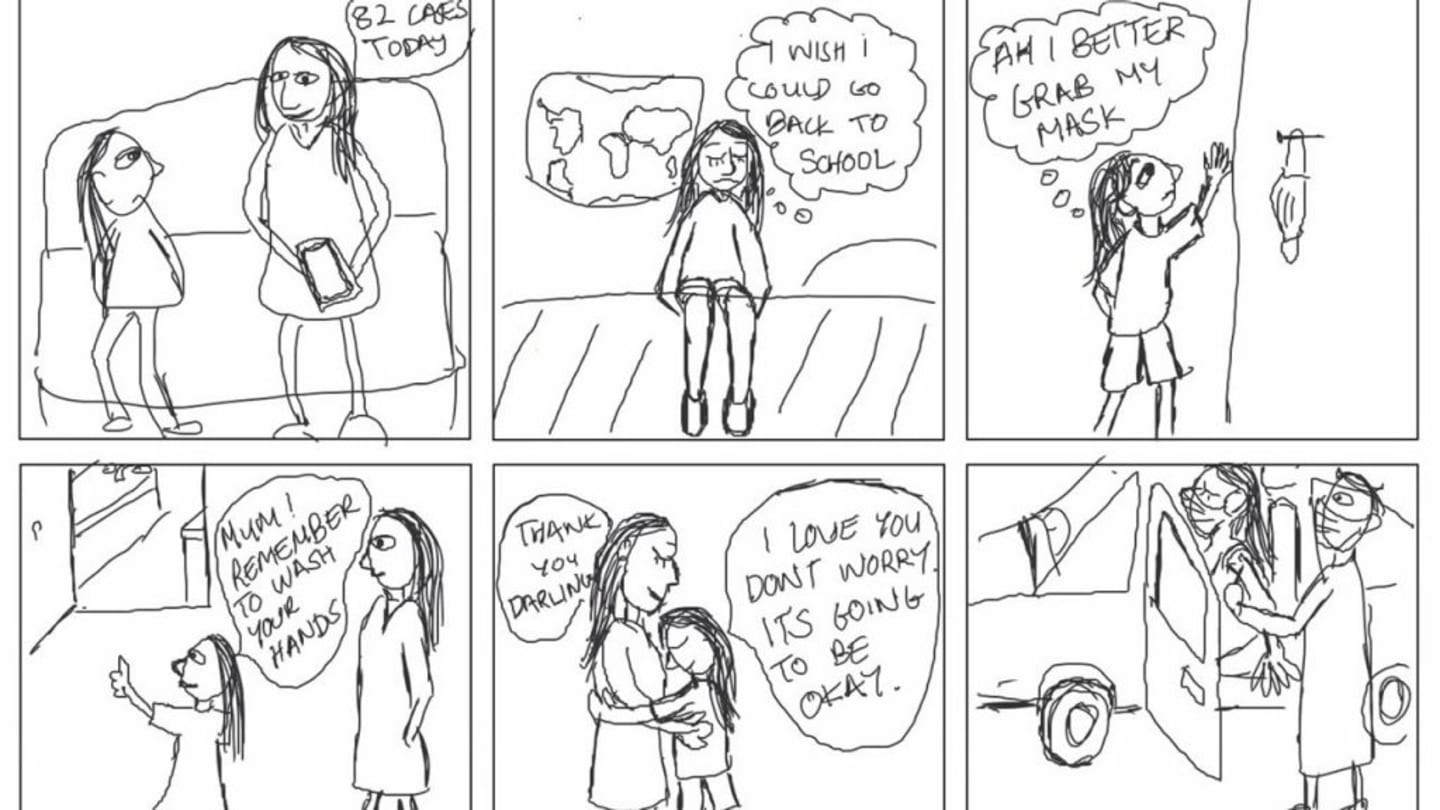New Zealand researchers are learning about how Kiwi children experienced the Covid-19 lockdowns through anonymous comics.
Frustration with the lack of available information on the pandemic's affects on New Zealand children, University of Auckland public health researcher Julie Spray led the project.

Two panels from a comic by a 9 year old boy from West Auckland Photo: The Pandemic Generation
In November last year, 26 Auckland children aged between 7 and 11 took part in the five-month study called The Pandemic Generation.
- Find out more about The Pandemic Generation study and view the comic gallery here

Dr Julie Spray from the University of Auckland. Photo: Supplied
Dr Spray tells Afternoons she wanted to hear from the children directly about how they were coping.
“I recruited kids all across Tāmaki Makaurau and drew comics with them, either they drew, or I drew them under their direction, or we drew them together.”
While drawing has long been used in child psychology, comics offer a fresh method of expression with a narrative element, she says.
“[It] kind of connects to ideas of a hero and a hero’s journey that I think really captured children’s imaginations and they told some amazing stories.”
Some of the children's illustrations revealed that they found it difficult to answer questions about how ‘different’ it was living with restrictions when they remember no other way of life, she says.

Children weighed up risk, just like adults, but without information tailored to them, The Pandemic Generation study found. Photo: Supplied / University of Auckland
In their comics, the children conveyed a mixture of sentiments about the pandemic.
“I think kids definitely had a sense something was going on, but they didn’t necessarily understand the scale of it or why it was important or why adults kept talking about it all the time.
“I think part of it is because they were living in very small worlds. They often didn’t have that same global sense of the pandemic.”
Although the isolation that felt strange to adults was ‘normal’ for these kids, they still experienced its effects, Dr Spray says.
Children used their creativity as a coping mechanism.
“There were definitely some things that really impacted kids, one of them was the social isolation of lockdown and not having their normal day-to-day contact with their friends at school. A lot of kids were really lonely and really sad.”

The Pandemic Generation study asked children to draw their experiences of Covid-19 lockdown. Photo: Supplied / University of Auckland
Public health information tailored for adults is usually the only source of information for children, who often overestimated the risks and became anxious, Dr Spray says.
One 10-year-old girl from West Auckland drew a picture of herself dressed in many layers of clothing with a yoghurt cup on her head as a walkie-talkie and a six-foot cardboard sword - for enforcing social distancing rules - in one hand.
“In the comic, she says ‘stand back person that coughed six times at 4.26pm’ because she pays such close attention to when people cough. So she was someone who was a little more anxious than some of the other kids and certainly took on some really creative measures as a way to protect herself.”
Scholar Samantha Samaniego - who Dr Spray supervised - discovered that children and their needs are hardly ever mentioned or recognised in health promotion policy, media and messaging.
“[Children] were really, really invisible a lot of the time. And [secondly], when they were mentioned, it was in really narrow ways so there was a lot of talk about children at risk and how at risk they were at infection or how much children risks to other people.
“There wasn’t really much comment on what matters to children or children as part of our team of five million. Actually, 20 percent of that team is young people under age 18.
“So [there was] very little commentary on the sacrifices that kids have made or the work that they have done to keep themselves and their communities and families and nation safe.”

The Pandemic Generation study found children were frequently agents of public health, reminding parents to wear masks or scan in, requesting vaccinations and taking measures to keep themselves and others safe. Photo: Supplied / University of Auckland
When politicians weigh up the pros and cons of public health decisions, children’s needs were frequently ignored, she says.
“I don’t consider myself enough of an expert to make that cost-benefit evaluation myself, but I would ask whether the value of playgrounds to children was sufficiently recognised when that decision [to close them] was made, particularly in the last lockdown.
“Because a lot of the kids that I talked to, they were in lockdown in very small homes, there was not a lot of space when you had everybody at home and they didn’t necessarily have backyards or anywhere else to really play.
“It’s also an equity issue. Because kids who had the least space in their backyard and the least play equipment and pools and jungle gyms in their backyards were the kids who were most in poverty.
“So, there were some kids who had an awful lot more than others that helped them cope with lockdown and that’s just not fair.”

